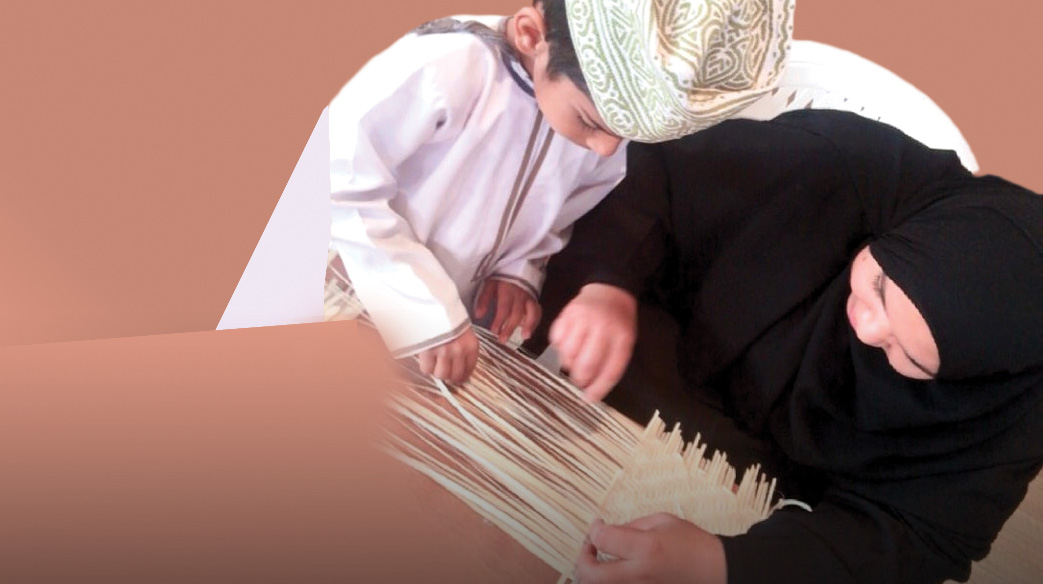


The manufacturing of palm frond, locally known as “Al Saafiat,” is one of the skills that has been handed for generations now. Especially in places where palm trees grow in abundance, the Omanis had been very resourceful in taking advantage of all the components of their surroundings, and this echoed in the usage of the date palms and its different parts. The flexibility of palm fronds allowed the makers to bend them into different shapes and sizes and as the skill has been handed from generation to generation, the finish products also become better.
Utilising Omani Al Saafiat is categorised into two parts: the ancient and the contemporary styles.
The ancient style only uses fronds as raw materials and makers do not add anything into the creation while the contemporary style includes additives such as yarns or threads, adhesives, metric tapes among others allowing makers to be more creative with their end products. The contemporary style which has gained traction in recent years also include working in segments and dimensions, a far cry from the ancient products but still stay true to the original concept and idea of the Omani heritage.
Zainab Ghafriy and Taqiah Al Sukhburi are two of the many Omani mothers who thrive in this practice. Both women started making handicrafts out of palm fronds after joining a training programmed organised by the General Authority for Craft Industries at the Palm Centre in Rustaq.
“The programme we attended went on for two years. The initial training was supposedly short, but we attended other trainings as well in order to widen our skills and get more ideas,” Zainab said.

“After we finished the training, we could not stop going as we love to work and desire to learn more. We are currently working in a joint project for seven years to showcase our Omani heritage in an advanced way,” she added.
Zainab shared that the palm frond passes through several stages before it can be shaped into anything.
“The first process, of course, is the collection. You have to collect good varieties after which you have to wash and dry them, prune them and depending on your desired end product, colour them if necessary. Mostly, we preserve the fronds with their natural colours and then later artistically add colour and shape them,” she said.
Taqiah explained that most finished products use basic and repetitive colours like red, green and violet. Dominating the market however, are the milky coloured fronds as these are more natural.
“This distinctive colour (milky colour) is the colour known by the older generation because colouring is not readily available then. It’s only recently that makers started putting colour on them,” she said.

coming back. They also go through different social networking sites to get inspiration.
Both mothers admit that the job can be tough sometimes as they properly have to balance family life with work life.
“If we are a bigger group, it will be easier, but there’s only two of use, and when we embark on a big project, it can take time,” Taqiah shared.
“Sometimes people do not buy the products because they think that the prices are exaggerated, but they don’t realise how much effort and time we have spent to complete these pieces,” she added.
Some of their other challenges include heavy competition.
“We are fully aware that this profession is a tiring profession, but we continue to work despite all the challenges,” she noted.
Both women participate in major exhibitions and forums in the Sultanate such as the Muscat Festival, Salalah Festival and the Date Festival.
For those interested, there are many training courses like what Taqiah and Zainab attended. This is the government’s way of also preserving a beloved heritage.
Both women reported that responsible government agencies had also been supporting and promoting many local products to reach an even wider audience. They are both happy to get the support of promoting their products both locally and globally.
BY RUQAYA AL KINDI
Oman Observer is now on the WhatsApp channel. Click here



